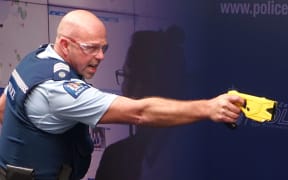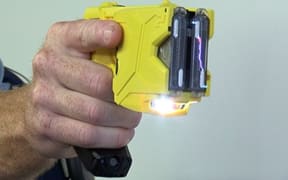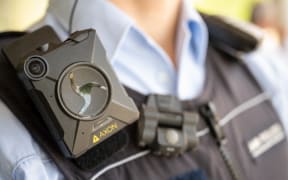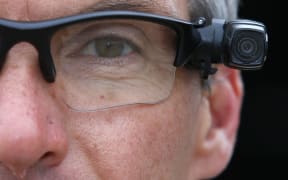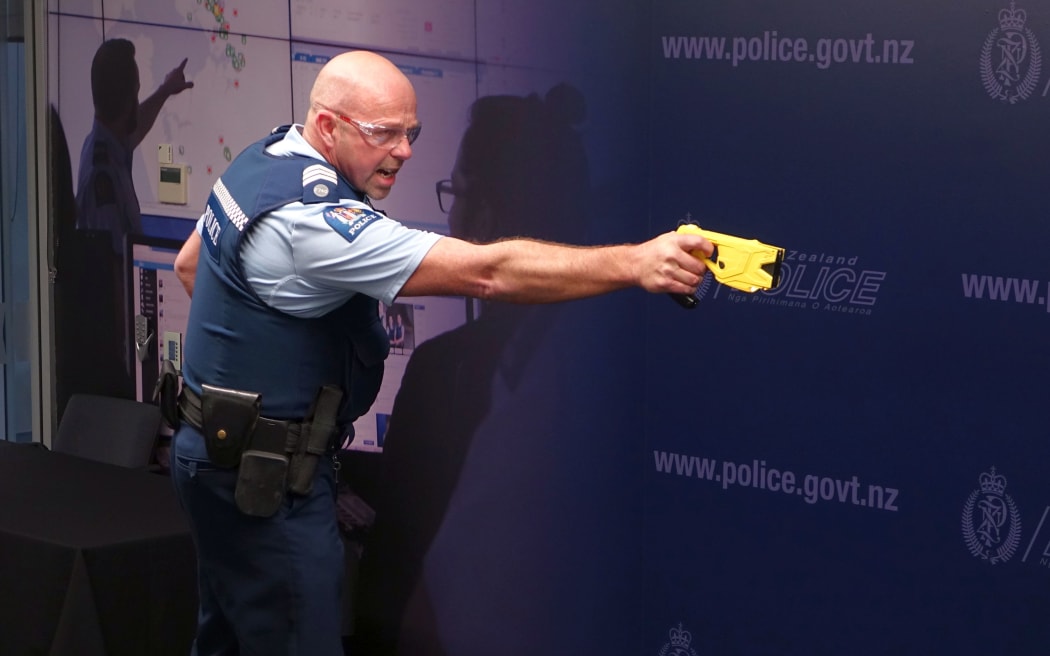
File photo. Police demonstrates the use of a taser. Photo: RNZ / Samuel White
Police are replacing their tasers but will not say exactly what the new weapons are or how they will be monitored for public safety.
Neither will Police Minister Ginny Andersen.
Their existing X2 Tasers have built-in cameras. But many new tasers do not and instead pair with body-worn cameras to record video footage of every time they are used.
Andersen said police had made "no decisions" about using body-worn cameras. But police on Wednesday told RNZ: "we have ruled out body cams."
Neither would address the question of cost. This is bound to run to the multi-millions.
Police were going to trial a new taser linked to body-worn cameras last December, but when they learned the technology was being released commercially in January, "police stopped the trial and elected to become early adopters of the technology", an OIA newly released to RNZ revealed.
Later, police clarified "early adopters" did not refer to body-worn cameras.
In January, Arizona taser-maker Axon released the Taser 10 which can shoot 10 probes before having to reload, for a distance up to 13m or half a basketball court - X2s shoot just 7.6m.
Tasers are newly controversial across the Tasman after the death in May of a 95-year-old woman who Australian police tasered. A police officer appeared in a New South Wales court for the first time last week on charges.
Axon, which says its mission is to "protect life and obsolete the bullet", has revived a much-opposed plan to put tasers on drones.
It recently bought a Belgian company, Sky-Hero, which puts flashbangs on drones. "Axon is writing a new chapter. The future is less lethal," the company website said.
Last month, Queensland police said they would become the first force outside the United States to use the Taser 10.
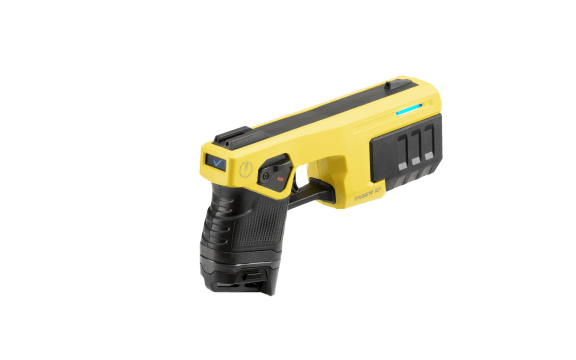
Axon's Taser 10 product. Photo: Supplied / Axon
Modern tasers are usually linked to Axon body-worn cameras which can cost $800-$1500 each. The cameras usually link to an Axon cloud storage system called evidence.com.
In New Zealand, police's existing tasers send their footage to Axon's evidence.com hosted by Amazon Web Services in Australia.
But storage is expensive. Axon now makes more from evidence.com - about $700 million of its $2 billion annual revenue - than from selling tasers.
In this country, police have gone back and forth on bodycameras, cancelling an earlier trial in 2019, and conducting inconclusive research of the taser-camera pairing in 2020.
Last November, they told RNZ: "If on-body cameras were to be more closely considered by police at any future stage, among the complexities that would need to be resolved would be the capability and management of potentially significant volumes of footage."
Prison guards and bailiffs wear cameras but police do not.
Asked how the new technology would be overseen if they did not use body-worn cameras, neither police nor the minister gave a clear answer.
"The community has clear expectations about how any kind of use of force is monitored and I know that this is front of mind for police," said Andersen in a statement on Wednesday.
Police said they were still consulting stakeholders.
"This is an important part of the process to ensure visibility and accountability of our decisions. We are planning to announce more detail in the coming weeks."
This "does not relate to body-worn cameras", they said.
Regardless, officers had to report any use of force, including of a taster, they said.
They were accountable through their Taser Assurance Forum, and also each year put out a report with taser data in it, they said.
In early 2023, police said they were still looking at bodycams and considering "what impact will this have on ... complaints, investigations, prosecutions, procedurally-just contacts with the public, etc."
They would ensure any new technology was "safe, maintains privacy, ethical and human rights, and most importantly improves the safety outcomes for our staff and the public".
Police got six years' use out of their first model of tasers, before they began replacing them with the X2s in 2012.
Community groups formed a 'campaign against the taser' to oppose police introducing them in 2006.
On Wednesday, Andersen said replacing the taser fleet "is an operational decision for Police to make, but as Minister I continue to receive regular updates".
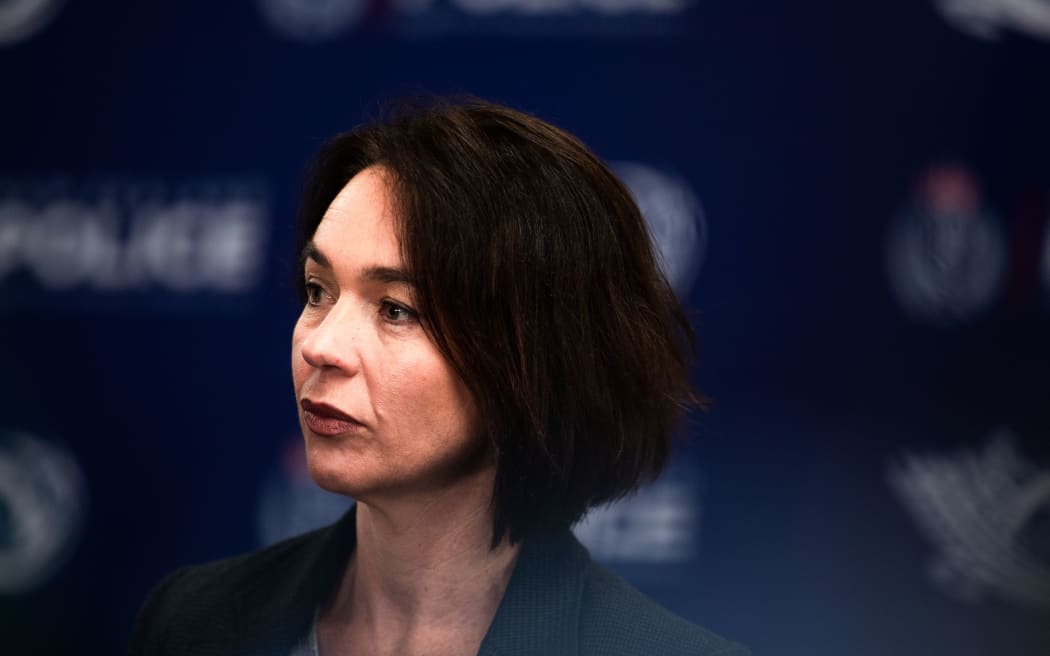
Police Minister Ginny Andersen Photo: RNZ / Samuel Rillstone
An update she got on tasers as incoming minister in July was mostly redacted.
News agency Reuters has a taser tracker which has recorded about 1100 deaths of people in the US tasered by police across two decades.
In New Zealand, as well as the taser footage, police put footage of video interviews with family violence victims and from the Eagle helicopter on the Axon system.
Last year, police said they were looking to expand that, but on Monday they told RNZ they had "no plans to extend the use of Axon evidence.com".
Some US police departments have rung up multi-million-dollar bills with Axon for bodycam data storage on evidence.com.
The Office of the Privacy Commissioner said it had talked with police in the past six months about Axon, but "under the secrecy provisions we operate under we cannot reveal the content of those discussions".
Axon paused its tasers-on-drones project last year after its independent ethics advisory board quit over the company's head linking the project to combating school shootings, but has restarted it in the face of some shareholder resistance.
"Axon will never build lethal drones," it recently told shareholders, adding that nearly 70 percent of Americans in a survey liked the idea of tasers on drones.


